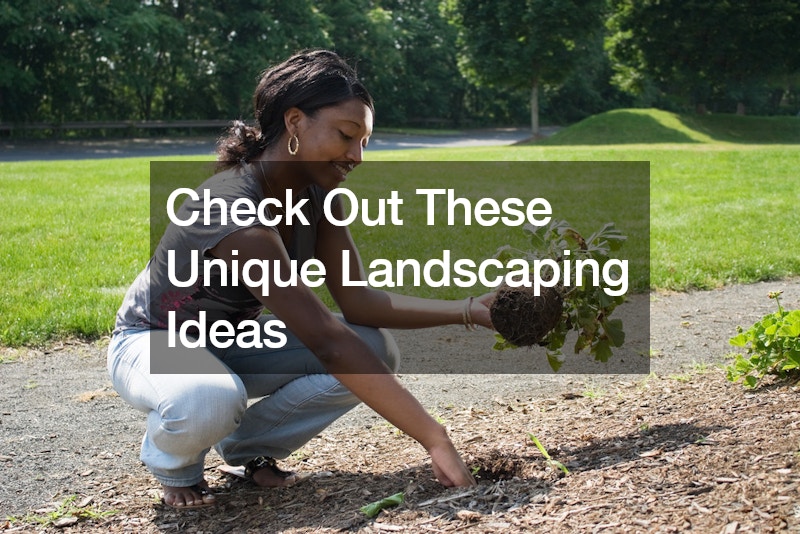3. How Can I Create a Kid-Friendly Garden?

Designing a garden that appeals to children involves careful consideration of safety, entertainment, and educational elements. Landscaping services often recommend creating designated play areas that are safe and engaging. This includes using soft surfaces like rubber mulch or artificial turf under play equipment to cushion falls and reduce injuries. Installing sturdy, age-appropriate structures such as swings, slides, and climbing frames encourages active play and physical development.
Beyond physical play, educational opportunities abound in a kid-friendly garden. Planting an edible garden teaches children about where food comes from and encourages healthy eating habits. Kids can participate in planting, watering, and harvesting fruits, vegetables, and herbs, fostering a connection to nature and a sense of accomplishment. Incorporating sensory elements such as fragrant flowers, textured plants, and wind chimes stimulates their senses and encourages exploration.
Interactive features add an element of whimsy and creativity to a kid-friendly garden. Consider adding stepping stones shaped like animals or colorful pathways that lead to hidden nooks or play areas. Small water features like shallow ponds or fountains provide sensory experiences and attract wildlife, further enriching the learning environment. Creating spaces for imaginative play, such as a fairy garden or dinosaur dig area, sparks creativity and allows children to immerse themselves in their own outdoor adventures.
4. What Are Some Creative Hardscaping Ideas?
Hardscaping elements play a crucial role in defining the structure and functionality of outdoor spaces. Hardscaping contractors specialize in designing and installing features like patios and decks that extend living areas into the garden. These outdoor rooms serve as gathering spaces for entertaining guests or relaxing with family, seamlessly integrating indoor and outdoor living. Choosing durable materials like natural stone, composite decking, or brick ensures longevity and minimal maintenance.
Stately pathways are another creative hardscaping idea that adds both practicality and aesthetic appeal to your landscape. Pathways can be designed in various styles, from formal geometric patterns to meandering curves that invite exploration. Materials such as flagstone, gravel, or pavers can be used to create pathways that complement the overall design of your garden while providing functional access to different areas. Lighting pathways with low-voltage outdoor lighting not only enhances safety and visibility at night but also adds ambiance and highlights the beauty of your hardscape features.
Decorative walls and fencing not only define boundaries but also enhance privacy and security in your garden. These structures can be designed to complement the architectural style of your home and the surrounding landscape, using materials such as wood, stone, or wrought iron. Incorporating vertical elements like trellises or living walls allows you to grow climbing plants such as ivy or roses, adding vertical interest and softening the hard edges of hardscaping features. By integrating these creative hardscaping ideas into your garden design, you can create a cohesive and visually appealing outdoor space that enhances the overall beauty and functionality of your property.
5. How Can I Integrate Water Features Into My Landscape?

Water features add a captivating element of tranquility and visual interest to any landscape. Backyard landscapers often suggest incorporating a backyard pond as a focal point. Ponds not only provide a habitat for aquatic plants and animals but also attract wildlife such as birds and frogs, enriching the biodiversity of your garden. The gentle sound of water cascading over rocks or into a pond creates a soothing ambiance, transforming your outdoor space into a serene retreat.
Flowing streams are another enchanting water feature that can be integrated into your landscape design. Meandering through the garden, streams create a sense of movement and natural beauty. They can be designed to connect different areas of your garden, bridging gaps and enhancing the overall flow of the landscape. Planting native aquatic plants along the stream banks helps maintain water quality and provides a habitat for beneficial insects and amphibians.
Fountains and waterfalls offer dynamic focal points in the garden, adding movement and sound to stimulate the senses. Modern fountain designs range from minimalist sculptures to intricate tiered structures that create soothing water sounds. Waterfalls, whether naturalistic or formal, can be incorporated into retaining walls or terraced landscapes, creating a dramatic visual impact. These features not only enhance the aesthetic appeal of your garden but also create a peaceful atmosphere for relaxation and contemplation.
6. What Plants Are Best for Attracting Wildlife?
Creating a garden that attracts wildlife begins with selecting plants that provide food, shelter, and habitat for local fauna. Landscape designers recommend planting pollinator gardens filled with native wildflowers that attract bees, butterflies, and other beneficial insects. These gardens not only support pollination but also contribute to the health of your garden ecosystem. Including bird-friendly shrubs such as berry-producing bushes provides food sources and nesting sites for local bird species, enhancing biodiversity and creating a lively garden environment.
Butterfly host plants are essential for supporting the life cycle of butterflies, from egg-laying to caterpillar-feeding stages. Milkweed, for example, is a host plant for monarch butterflies and attracts these iconic pollinators to your garden. Incorporating a variety of flowering plants with different bloom times ensures a continuous food supply for pollinators throughout the growing season. By designing your garden to include diverse plant species that meet the needs of local wildlife, you can create a thriving ecosystem that benefits both plants and animals alike.
7. How Can I Utilize Vertical Space in My Garden?

Maximizing vertical space in your garden is a practical solution for small yards or urban settings where ground space is limited. Vertical gardens, endorsed by irrigation system experts, utilize walls, fences, or trellises to grow plants vertically. This technique not only expands planting areas but also adds visual interest and texture to your garden. Vertical gardens can be designed using modular systems with built-in irrigation, ensuring plants receive adequate water and nutrients.
Climbing plants and trellises are versatile additions to vertical gardens, providing support for vines and enhancing vertical structures with lush foliage and flowers. Popular climbing plants include jasmine, clematis, and climbing roses, which add fragrance and color to vertical spaces. Trellises can be customized to fit your garden style, from rustic wooden structures to modern metal designs, offering endless possibilities for creativity and customization. Hanging planters suspended from pergolas or beams are another effective way to utilize vertical space, creating cascading displays of flowers or trailing vines that add depth and beauty to your garden design.
8. What Are Some Ideas for Small Yards?
Small yards present unique opportunities to create intimate and functional outdoor spaces that maximize every inch of available space. Collaborating with a local landscape lighting contractor can illuminate your small yard, extending its usability into the evening hours. Lighting pathways, plants, and architectural features enhances safety, adds ambiance, and highlights the beauty of your landscape design after dark. LED lighting fixtures are energy-efficient and come in a variety of styles to complement your garden aesthetic.
Container gardening is an excellent solution for small yards, allowing you to grow plants in portable pots that can be rearranged or moved as needed. Containers come in various sizes, shapes, and materials, from terracotta pots to modern fiberglass planters, offering flexibility and versatility in garden design. Choose plants that thrive in containers, such as herbs, succulents, and dwarf fruit trees, to create a vibrant and productive garden space. Vertical gardening techniques, such as using trellises or wall-mounted planters, further optimize space by growing plants upwards instead of outwards, maximizing planting areas without sacrificing style or functionality.
Space-saving furniture is essential for creating comfortable seating and dining areas in small yards. Choose folding or stackable furniture pieces that can be easily stored when not in use, maximizing space for movement and relaxation. Compact bistro sets, foldable chairs, and built-in benches with hidden storage are practical options that blend seamlessly into small yard designs. By combining these ideas, you can transform your small yard into a multifunctional outdoor retreat that reflects your personal style and enhances your enjoyment of outdoor living.
9. How Can I Incorporate Edible Landscaping?
Integrating edible plants into your landscape not only adds beauty and diversity but also provides fresh, nutritious food for your family. Landscape design companies advocate for planting fruit trees and bushes that not only produce delicious fruits but also enhance the visual appeal of your garden throughout the seasons. Choose fruit varieties suited to your climate and soil conditions, ensuring they receive adequate sunlight and water for optimal growth and fruit production.
Herb gardens are versatile additions to edible landscaping, offering a range of culinary and medicinal herbs that can be grown in raised beds, containers, or interplanted with ornamental plants. Herbs like basil, mint, and rosemary thrive in sunny locations and provide year-round harvests for cooking and herbal teas. Incorporating vegetables into your garden design, whether in dedicated beds or mixed with ornamental plants, allows you to enjoy fresh produce grown right outside your door. Consider companion planting techniques that pair vegetables with flowers or herbs to naturally deter pests and promote healthy growth.
Vegetable beds can be designed using raised beds, which improve soil drainage and warmth, extending the growing season and increasing yield. Raised beds also make gardening more accessible by reducing bending and kneeling, making it easier to maintain and harvest your crops. Incorporating edible landscaping not only enhances the functionality of your garden but also creates a sustainable and rewarding outdoor space that nourishes both body and soul.
10. What Are the Latest Trends in Landscaping?
The latest trends in landscaping emphasize sustainability, technological integration, and naturalistic designs that harmonize with the environment. Local landscaping companies promote sustainable practices such as using native plants that are drought-tolerant and require minimal water and maintenance. Native plants also support local wildlife and promote biodiversity, creating resilient ecosystems in urban and suburban landscapes.
Smart technology integration is another growing trend in landscaping, offering convenience and efficiency through automated irrigation systems, lighting controls, and smart garden tools. These technologies allow homeowners to monitor and control their landscapes remotely, adjusting watering schedules and lighting settings based on weather conditions and plant needs. Solar-powered lighting and water features further reduce energy consumption and environmental impact, showcasing a commitment to sustainability.
Naturalistic designs that mimic local ecosystems are gaining popularity, creating landscapes that blend seamlessly with their surroundings. Incorporating natural materials such as stone, wood, and gravel enhances the aesthetic appeal of outdoor spaces while reducing the use of synthetic materials. Native grasses, meadow gardens, and wildlife habitats attract pollinators and beneficial insects, contributing to the health and vitality of the landscape.
In conclusion, landscaping offers endless opportunities to enhance your outdoor space while promoting environmental stewardship and sustainability. By incorporating these innovative ideas into your garden design, you can create a harmonious and inviting environment that reflects your personal style and values. Whether you’re revamping an existing landscape or starting from scratch, embracing creativity, functionality, and sustainability will ensure your garden becomes a cherished retreat for years to come.







